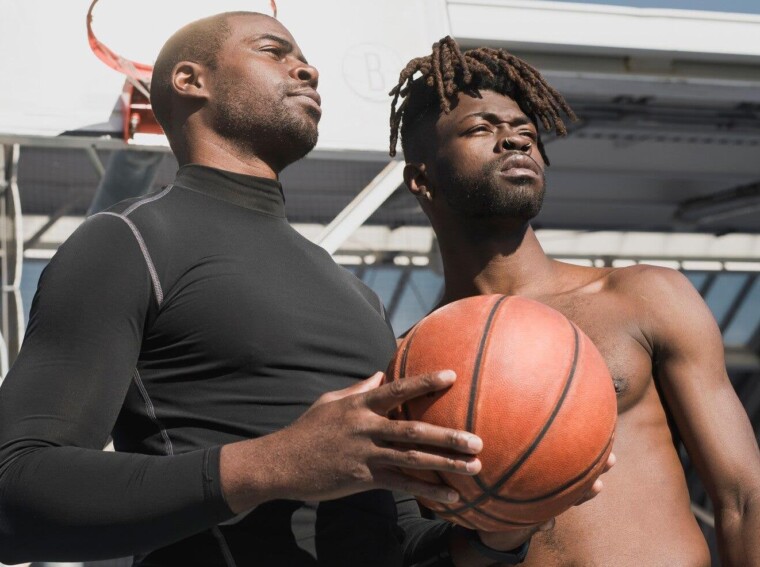The offense makes highlight reels, but the defense wins the playoff series. Of course, the NBA of today sees its defenses as more layered, adaptable, and intelligent than ever. The simple man-to-man scheme or static zone is no longer enough against elite talent with advanced offensive spacing.
Contemporary defense strategy has evolved into a game of reads, rotations, and reactions. Units run a combination of schemes that change with matchups, trends, and time remaining. Let’s get into how these systems operate—and why top defenses are constructed on something more than effort.
Switch, Hedge, Trap: Understanding the Defensive Toolbox
Modern basketball has developed into a mismatches and spacing game. They now defend five-out lineups, incredibly high pick-and-roll heavy, and isolation-heavy playmakers that can score from anywhere, so teams should use hybrids with constant communication and versatility.
Coaches install multiple coverage packages, teaching players how and when to switch, hedge, or trap. Switching neutralizes screens by simplifying responsibilities. Hedge coverage slows down ball handlers by momentarily doubling them. Trapping forces the ball out of a star’s hands, creating chaos and forcing mistakes.
In these fluid game plans, defensive IQ is more crucial than ever. One missed rotation or tentative step can give up an open three. That’s why top defenders don’t just rely on athleticism—anything else in great defenders is exceptional positioning, timing, and anticipation.
This stacked complexity has an unexpected analog in another arena: sports betting. In a market like football betting, users weigh variables—the strength of the team, pace, and injuries—to make intelligent choices. NBA defenses similarly weigh in real-time, changing on the fly based on who’s in the game and what’s transpiring. Both depend on data, intuition and being able to read the situation.
Here’s how some of the fundamental defensive structures measure up in today’s game:
| Defensive System | Strengths | Weaknesses |
| Switch Defense | Limits mismatches, easy to communicate | Vulnerable to post-ups, requires size parity |
| Drop Coverage | Protects rim, controls paint | Gives up mid-range and pull-up threes |
| Blitz/Trap | Forces turnovers, disrupts rhythm | Risk of open shots if rotation is late |
| Zone Defense | Helps against iso scorers, saves legs | Can be exposed by great passing teams |
These systems aren’t used in isolation. Elite defenses weave them together, mixing looks to confuse and contain.
Positionless Defense: Everyone’s a Stopper
If there’s one defining feature of today’s NBA defense, it’s positionless versatility. The line between guard, wing, and big has blurred—not just on offense, but especially on defense.
Take, for instance, Draymond Green. He can guard perimeter point guards or pound centers on the low block. Mikal Bridges and Jrue Holiday are guys who can lock up three spots. The more switchable defenders that are at the team’s disposal mean the more weapons they have at their disposal to cut flow and get bad shots.
Positionless defense isn’t just about size—it’s about mobility, strength, and mindset. Defenders are trained to contest threes one moment and box out the next. That range of responsibility requires elite footwork, lateral quickness, and basketball intelligence.
And as NBA offenses become more creative—drag screens, ghost screens, flare actions—the defenses that survive are the ones that move as one. Think of them like a net, tightening and shifting based on pressure points.
This coordinated movement, this shared understanding of space and role, makes the difference between a well-timed stop and a blown rotation.
No wonder why top clubs invest heavily in scouting, film sessions, and player development. As a Melbet Indonesia user studying odds and trends prior to a bet, coaches study hours of footage trying to discover an opponent’s every nuance. Prep work makes the defenders on-court analysts.
Communication and Trust-The Hidden Layer
Behind each outstanding defensive play—each well-timed steal or fought shot—is a team talking all the time. NBA defenses need vocal leaders to call out screens, signal switches, and announce coverage shifts. Without such chatter, even the most athletic group can disintegrate.
 This communication fosters trust. Players must be informed that help is on the way, their rotation will be covered and the system will hold. This belief provides defenders with the license to play aggressively—that’s cutting off drives, contesting shots, and recovering with speed.
This communication fosters trust. Players must be informed that help is on the way, their rotation will be covered and the system will hold. This belief provides defenders with the license to play aggressively—that’s cutting off drives, contesting shots, and recovering with speed.
Trust is also what gives permission for the creativity of risk-taking: passing lane jumping, half court trapping, doubling off the right shooter. Without trust? Chaos. With trust? Controlled chaos.
And that’s the real beauty of defense—it’s both science and spirit. Systems give the structure, but heart and hustle make it effective. When players buy in, the result is a wall that bends but doesn’t break.
Stops That Define Champions
You don’t win titles without defense. With every miraculous game-winner, there’s a corresponding late-game stop, an altered shot, a perfectly timed switch, and a help-side block.
In today’s NBA, great defense isn’t static. It’s fluid, fast, and full of decisions made in milliseconds. Teams that master the mix of strategy and execution don’t just survive—they dominate.
So the next time you watch a tight game, don’t just follow the ball. Watch the rotations. Track the traps. Listen for the switches. The game within the game is happening at the defensive end—and it’s where champions are made.
